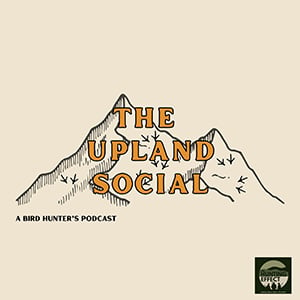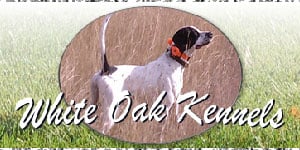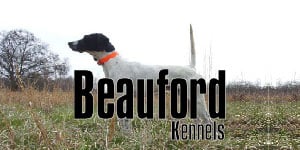Ringnecks in the snow
Hunting winter Pheasants
At the same time, hunting can actually be easier to hunt pheasants in the snow if the right strategies are utilized. Yes, the birds will act differently, but hunters need to use this to their advantage if they want to bring home a nice fat long-tail pheasant for Thanksgiving or Christmas dinner.
Use these tips for hunting pheasants in the snow.
Sittin’ Tight. Pheasants have a difficult time moving in the snow. This will affect their uncanny ability to escape and get away. Unlike during the regular autumn conditions the birds are able to move around freely. Pheasants will see and detect danger from a long way away and will resort to running from the danger and make their way to thicker cover or simply take to the air and fly away. Snow changes all that. When conditions are light and fluffy, they can’t make their way through as easily. Because of this, pheasants will be forced to sit tight, unless they absolutely have too. Pheasants will have to wait until the crust forms on top of the snow before they are able to move around.
Snow allows for somewhat easier shots. Pheasant hunters need to walk even slower when hunting in the snow. Doubling back and busting through thick areas a couple of times is a good tactic. There have been many times, when I was walking a field and kick swaths of grass or stalks that are heavy laden with snow and I inadvertently launch a rooster into the air.
Cold temperatures also play a part in how a pheasant reacts to winter weather and snow. To conserve energy, pheasants will hold tight in thick cover and live off their fat reserves. If no cover is available, pheasants will burrow themselves in the snow and in whatever cover is available. That is why it is detrimental for quality habitat to be in place for pheasants and other wildlife during blizzard like conditions.
Habitat and Cover. Thick cover is the name of the game in the snow. Like other wild animals, pheasants will take to thick cover for protection from the elements. During cold and snowy days of the late season, pheasants need protection from the elements but also from predators (we’re talking everything from hawks to coyotes and foxes, to humans).
It has been my experience that the pheasants’ cover of choice was very specific. The best habitat consisted of very dense, thick cover that provided protection from falling snow, blowing winds, and predators. The top-three locations that I target during the winter months and when it snows are:
Cattail Sloughs: Cattails are wetland plants that provide an excellent place for wintering pheasants. When the weather turns frigid and standing water ices over, the cattails that ring around waterholes actually create new habitat and used by pheasants. The tall reeds interlock and form dense stands of thick cover. When the snow topples the cattails, the vegetation creates a canvas of protection when they become matted and form little caves and caverns under the surrounding standing cattails. This is where pheasants will be huddled up.
Excellent places for hunters to target include frozen marshes, potholes, ponds, and lakes. A well-trained dog that can bust through thick cover is a must if birds are going to take flight. Look for tracks to determine if areas are being used and to see established traffic areas.
Switchgrass: High, thick grass creates a uniform blanket of cover for when it snows. Quality winter cover in the form of switchgrass located near high-energy food sources can provide the necessary resources needed by pheasants to survive harsh winter conditions. Switchgrass is able to withstand winter weather and because it gets tall, its stiff-stemmed construction stands well in the snow. It provides excellent thermal cover and shelter from the bitter winds and heavy snow for pheasants during blizzards and plummeting temperatures.
Bent Over Trees & Brush: Along with those thick area’s pheasant hunters should also be on the lookout for trees and brush that have been bent over from the weight of a snowfall for hiding pheasants.
Look for trees such as pine, cedars, or other thick trees where the snow will have its effect and cause branches to create areas of refuge out of the elements. There will be dry areas under the trees where pheasants can keep out of winter weather. It provides natural protection from the snowy conditions.
Hunters should sneak through these areas with eyes peeled looking for movement from scurrying pheasants. Walk through the area several times because birds will be difficult to flush. Post hunters on either side and on the ends if possible, while the dogs run through the trees. This pressure will cause pheasants to fly providing shots.
In conclusion pheasant hunting in the snow has its advantages. Pheasant hunters largely have the fields to themselves because other hunters would rather hunt in far less wintry situations. Those that are willing to head out in less than perfect conditions, and hunt once the snow ends can find birds sitting tight or holed up in thick cover. Hunters need to walk thick areas a couple of times to get those long tails in the air for a chance to score a bird or two in the game bag. There is something special about hunting in snow. It’s seeing the snow fly off a dog’s paws as it dashes up and down through the white powdery substance. It’s the white flakes that fall onto your jacket and quickly disappears as it melts into tiny little water droplets.
Related Aritlces
Outwitting Pheasants
Late-season roosters are neurotic in trying to stay alive. Throughout the winter months those ring-neck roosters that have been successful in avoiding ending up in the game bag and then on to a plate with vegetables and potatoes have evolved into hardy and experienced birds. Worthy field opponents. They have become field masters at out-witting orange vested bird hunters and their dogs. The upland chess board is made up in their favor. With an array of habitat and varying landscape, including every imaginable type of cover a pheasant will use to escape – it’s no wonder that hunters need to employ military style tactics to be on the same upland battlefield as a ring-neck pheasant.
Hunting Those Cold, Wet Winter Days in the Fi
We had parked a half-of-mile down the road. A couple of dozen roosters stood idle in the field. They resembled tiny black checkmarks from a distance against the white backdrop. Every once-in-a-while some would scoot in and out of brush piles and thickets. The snow had covered the land. Tufts of yellow grass were scattered across the field. Most of the grass had been covered by the snow. With no where to hide, the birds found refuge in what little cover they could find. This meant flocks of pheasants sheltering up together out of the elements. A small woodlot seemed to be providing roosters a place to get out of the wind and cold. According to the map the public parcel included an adjacent field of sorghum.






















